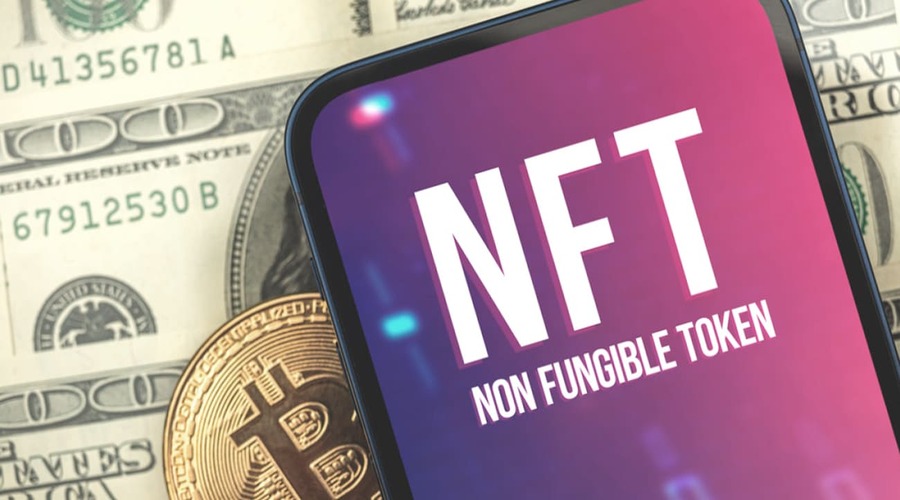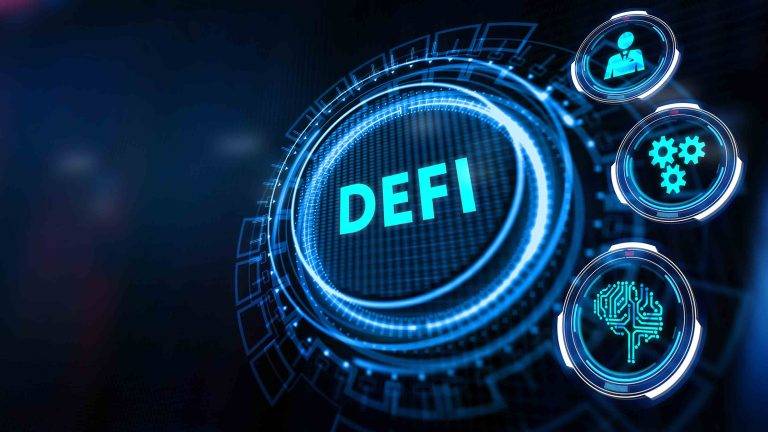
The Potential for NFT Counterfeiting and Methods to Prevent It
The world of digital art has been revolutionized by the emergence of non-fungible tokens (NFTs). These unique tokens, built on blockchain technology, have opened up new avenues for artists to monetize their work and collectors to own exclusive digital assets. However, with the growing popularity of NFTs comes the potential for counterfeiting, raising concerns about the authenticity and value of these digital creations. In this article, we will explore the risks associated with NFT counterfeiting and discuss various methods to prevent it.
What are NFTs?
NFTs, or Non-Fungible Tokens, are digital assets that represent ownership or proof of authenticity of a unique item or piece of content. Unlike cryptocurrencies such as Bitcoin or Ethereum, which are fungible and can be exchanged on a like-for-like basis, each NFT holds distinct properties that set it apart from any other token. NFTs can be used to represent a wide range of digital or physical assets, including artwork, music, videos, virtual real estate, and more.
The Rise of NFTs and Their Popularity
In recent years, NFTs have gained significant attention and popularity, attracting artists, collectors, and investors from around the world. The ability to tokenize and sell digital creations has provided artists with new revenue streams and greater control over their work. Meanwhile, collectors are drawn to the exclusivity and potential appreciation of NFTs, owning unique digital assets in a digital age.
Understanding NFT Counterfeiting
What is NFT counterfeiting?
NFT counterfeiting refers to the act of creating and distributing fake or unauthorized replicas of existing NFTs, misleading buyers and diluting the value of genuine digital assets. Counterfeit NFTs can be created by copying the artwork, metadata, or even the entire smart contract underlying the original token. These counterfeits are then sold or traded on non-fungible token marketplaces, deceiving collectors into purchasing inauthentic digital assets.
The risks associated with NFT counterfeiting
The potential for NFT counterfeiting poses several risks to both artists and collectors. For artists, counterfeit non-fungible tokens can undermine the value and exclusivity of their creations, leading to financial losses and reputational damage. Collectors, on the other hand, face the risk of purchasing counterfeit NFTs at inflated prices, believing they are acquiring genuine and valuable digital assets. Additionally, counterfeiting can erode trust in the overall non-fungible token ecosystem, hindering its growth and adoption.
Methods to Prevent NFT Counterfeiting
To combat NFT counterfeiting and safeguard the authenticity of digital assets, several methods can be employed. These methods focus on leveraging blockchain technology, implementing unique identifiers and metadata, utilizing smart contracts for verification, and securing non-fungible token marketplaces and platforms.
- Blockchain technology and its role in NFT authentication: Blockchain technology plays a crucial role in authenticating NFTs and preventing counterfeiting. By utilizing a decentralized and transparent ledger, blockchain ensures that each NFT is uniquely identifiable and immutable. The underlying technology provides a tamper-proof record of ownership and transaction history, making it difficult for counterfeiters to forge or alter NFTs without detection.
- Implementing unique identifiers and metadata: To enhance NFT authentication, implementing unique identifiers and robust metadata can be effective. Each non-fungible token should have a distinct identifier, such as a cryptographic hash, embedded within its metadata. This identifier serves as a digital fingerprint, allowing collectors and platforms to verify the authenticity of the non-fungible token by comparing it to the original creator’s records or a decentralized registry.
- Leveraging smart contracts for verification: Smart contracts, self-executing agreements built on blockchain, can be utilized to enforce authenticity and prevent NFT counterfeiting. Smart contracts can contain verification logic, ensuring that only genuine NFTs can be transferred or traded. They can also include royalty mechanisms, allowing artists to receive a percentage of future sales, further incentivizing authenticity and discouraging counterfeiting.
- Securing NFT marketplaces and platforms: Non-fungible token marketplaces and platforms play a vital role in preventing counterfeiting by implementing robust security measures. These platforms should conduct thorough due diligence on artists and their NFT creations, verifying their authenticity before listing them for sale. Implementing strong identity verification processes, multi-factor authentication, and secure storage for non-fungible token assets can help mitigate the risks associated with counterfeit listings.
Educating Artists and Collectors
Raising awareness about NFT counterfeiting
Raising awareness about NFT counterfeiting is essential to protect artists and educate collectors. Artists should be informed about the risks of counterfeiting and equipped with the knowledge and tools to safeguard their digital creations. This includes understanding the importance of metadata, utilizing blockchain technology, and staying updated on industry best practices to maintain the authenticity of their NFTs.
Encouraging artists to protect their work
Artists should be encouraged to take proactive measures to protect their work from counterfeiting. They can employ watermarks, digital signatures, or encrypted metadata within their NFTs to establish authenticity. By actively monitoring the non-fungible token marketplace and reporting any suspicious or unauthorized replicas, artists can help maintain the integrity of their creations and deter counterfeiters.
Educating collectors on identifying genuine NFTs
Collectors should be educated on how to identify genuine NFTs to ensure they are making informed purchasing decisions. Understanding the importance of verifying the metadata, examining the creator’s reputation and history, and utilizing blockchain explorers to track the NFT’s transaction history can all contribute to identifying and acquiring authentic digital assets.
Collaborative Efforts in the NFT Art Industry
Partnerships between artists, platforms, and blockchain experts
Collaboration between artists, NFT platforms, and blockchain experts is crucial to combat non-fungible token counterfeiting effectively. By forming partnerships, these stakeholders can share knowledge, develop innovative solutions, and collectively work towards establishing industry-wide standards and best practices to safeguard the authenticity of NFTs.
Developing industry-wide standards and best practices
The NFT industry should strive to develop and adopt industry-wide standards and best practices for non-fungible token authentication and verification. This includes establishing guidelines for metadata implementation, ensuring interoperability between different platforms, and promoting transparency in the transaction process. Standardizing these practices can create a more secure and trustworthy environment for artists and collectors alike.
Establishing decentralized verification mechanisms
Decentralized verification mechanisms can add an extra layer of security to NFT authentication. By leveraging decentralized identifiers (DIDs) and blockchain-based identity systems, NFTs can be linked to verifiable claims and attestations, establishing their authenticity in a decentralized and tamper-resistant manner. This distributed approach reduces reliance on centralized authorities and increases the overall security of the non-fungible token ecosystem.
Legal Implications and Enforcement
- Copyright protection for NFT creators: Copyright laws play a crucial role in protecting the rights of NFT creators and deterring counterfeiting. Artists should ensure they have proper copyright protection for their original creations, allowing them to take legal action against counterfeiters. Registering their work with relevant copyright authorities and utilizing digital rights management (DRM) tools can strengthen their legal position in case of NFT counterfeiting.
- Intellectual property laws and NFT counterfeiting: Intellectual property laws, including copyright, trademark, and patent laws, can be applied to combat NFT counterfeiting. These laws provide legal remedies for infringement, enabling creators to enforce their rights and seek damages from counterfeiters. Jurisdictions worldwide are increasingly recognizing the importance of protecting digital assets and are adapting their legal frameworks to address NFT-related counterfeiting issues.
- Enforcement actions against counterfeiters: Law enforcement agencies, in collaboration with NFT platforms and industry stakeholders, should take proactive measures to identify and take enforcement actions against counterfeiters. This includes conducting investigations, issuing takedown notices, and pursuing legal remedies against those involved in NFT counterfeiting. Swift and decisive enforcement actions send a strong message that counterfeiting will not be tolerated in the NFT ecosystem.
Emerging Technologies to Enhance NFT Security

As the world of NFTs continues to evolve, innovative technologies are being developed to enhance the security and authenticity of digital assets. These emerging technologies offer promising solutions to combat counterfeiting and protect the integrity of NFTs. Let’s explore some of these technologies in more detail.
- Biometrics and NFT Authentication: Biometrics, such as fingerprints or facial recognition, can be utilized for NFT authentication. By linking an individual’s unique biometric data to their NFT ownership, it becomes increasingly difficult for counterfeiters to impersonate or forge ownership claims. Biometric authentication adds an extra layer of security, ensuring that only the rightful owner can access and transfer their NFTs.
- Artificial Intelligence for Counterfeit Detection: Artificial intelligence (AI) algorithms are proving to be valuable tools in the fight against counterfeit NFTs. AI can analyze large volumes of data, including images, metadata, and transaction records, to identify patterns indicative of counterfeit NFTs. By training machine learning models to recognize authentic characteristics and detect anomalies, AI can help platforms and collectors identify and flag potential counterfeit NFTs.
- Augmented Reality for Enhanced Verification: Augmented reality (AR) technology can enhance the verification process for NFTs by providing visual and interactive experiences. By overlaying digital information onto the physical world, AR can enable collectors to validate the authenticity of an NFT by examining it in a real-world context. For example, an AR application can display additional details, artist information, or provenance records when the collector views the NFT through their device’s camera.
Conclusion
As the world embraces the possibilities of NFTs, it is crucial to address the potential for counterfeiting that accompanies their rise. By leveraging blockchain technology, implementing unique identifiers and metadata, utilizing smart contracts, securing marketplaces, and educating artists and collectors, the industry can mitigate the risks associated with NFT counterfeiting. Collaborative efforts, industry-wide standards, and enforcement actions further strengthen the authenticity and integrity of NFTs, ensuring a sustainable and trustworthy ecosystem for digital creators and collectors alike.
FAQs
- Can NFTs be counterfeited easily?
- NFTs can be counterfeited, but with proper authentication measures and industry-wide efforts, the risks can be significantly reduced.
- Are all NFT marketplaces secure?
- Not all NFT marketplaces are equally secure. It’s important to choose reputable platforms that implement strong security measures and due diligence processes.
- How can artists protect their NFT creations?
- Artists can protect their NFT creations by implementing unique identifiers, and robust metadata, and actively monitoring the marketplace for unauthorized replicas.
- What role does blockchain play in preventing NFT counterfeiting?
- Blockchain provides transparency, immutability, and decentralized verification, making it difficult for counterfeiters to forge or alter NFTs without detection.
- What should collectors look for to identify genuine NFTs?
- Collectors should verify metadata, examine the creator’s reputation, and utilize blockchain explorers to track the NFT’s transaction history to identify genuine digital assets.
I’m a professional writer. I have been writing about Cryptocurrencies for more than 2 years now and I consider myself one of the best authors in this field. I am very passionate about this technology and I believe that it will change the world as we know it. If you want to learn more about cryptocurrencies, you should definitely check out my work!


